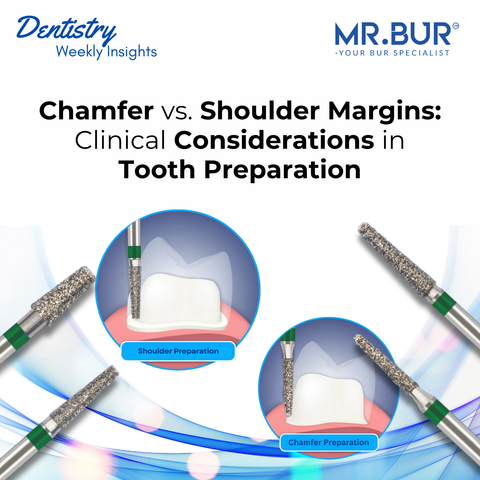Dental bonding remains one of the most versatile and economically efficient procedures in esthetic and restorative dentistry. While the cosmetic benefits are well known among patients, for clinicians, bonding offers a cost-effective solution for managing a range of clinical indications without compromising on function, esthetics, or chairside efficiency. In today’s environment of rising material costs and increased patient demand for affordable cosmetic options, dental bonding represents a critical tool in every clinician's armamentarium.
Understanding the Value of Direct Composite Bonding
Direct composite bonding involves the application of tooth-colored resin to repair or reshape teeth. It requires minimal preparation, preserves natural structure, and can typically be completed in a single visit, making it not only conservative but also financially accessible for both patient and practice.
Key Clinical Advantages:
-
Minimally Invasive: Preserves enamel and avoids aggressive tooth preparation.
-
Chairside Efficiency: No lab costs; treatment can be completed in under an hour per tooth.
-
Versatility: Indicated for chipped teeth, diastema closure, discoloration, minor malalignment, and incisal lengthening.
-
Low Overhead: Uses materials already standard in most restorative kits (composite, etch, bonding agent, polishing discs).
-
Patient Satisfaction: Delivers immediate results with low downtime and no anesthesia in many cases.
Indications Where Bonding is Clinically and Economically Optimal
-
Anterior Tooth Fractures
Composite bonding is ideal for fractured incisal edges in young patients where pulp vitality must be preserved and full-coverage options are too invasive. -
Diastema Closure
For patients unable or unwilling to pursue orthodontics, bonding allows seamless space closure in a single appointment. -
Cervical Lesions and Abrasion Areas
Root surface bonding can protect against sensitivity and erosion without surgical intervention. -
Trial Smile or Pre-Veneer Mock-ups
Bonding is an effective interim solution to test esthetic changes before committing to porcelain restorations.
Clinical Process of Dental Bonding (Step-by-Step)
Step 1: Shade Selection
-
Use a tooth shade guide in natural light or with a color-corrected light source.
-
Select one or more composite shades based on dentin and enamel layers.
Step 2: Tooth Preparation
-
Clean the tooth surface with pumice paste and a prophy brush to remove any pellicle or stains.
-
Lightly roughen the surface using:
-
Mr. Bur Fine Grit Pre-Polishing Flame Diamond Bur FG — ideal for beveling enamel edges and increasing surface area.
Step 3: Etching and Bonding
-
Apply 35–37% phosphoric acid etch to enamel for 15–20 seconds.
-
Rinse and gently air-dry; enamel should appear frosty.
-
Apply a universal or total-etch bonding agent, air-thin, and light cure per manufacturer’s instructions.
Step 4: Composite Application
-
Place composite in increments (maximum 2 mm).
-
Use instruments such as:
-
Composite placement spatula
-
Microbrush for tints or opaques
-
Mylar strip or celluloid crown form for proximal walls
Step 5: Curing
-
Cure each layer with a LED curing light (minimum 1000 mW/cm²) for 20 seconds.
-
Ensure proper polymerization especially in deeper or layered restorations.
Step 6: Finishing and Contouring
-
Begin contouring with:
-
Mr. Bur Super Fine Polishing Flame Diamond Bur FG — for gross anatomy shaping and margin blending.
-
Mr. Bur Super Fine Finishing Super Needle Diamond Bur FG — for proximal area refinement.
Step 7: Polishing
-
Use a one-step polishing protocol:
-
Rubber polishers (e.g., Mr. Bur 2U09 One Step Glossy Polishers) for surface smoothing.
While veneers and crowns provide longer-lasting results, they come at a significantly higher cost. Bonding, when properly maintained, can serve as a reliable medium-term solution for patients with financial constraints or conservative esthetic needs.
Tips for Improving Bonding Longevity and Clinical Outcome
For dental professionals aiming to increase the durability and esthetic quality of bonding, the following best practices are recommended:
-
Use a rubber dam or isolation system to prevent contamination.
-
Layer composite in increments to control polymerization shrinkage and achieve better anatomic contour.
-
Use tints and opaquers when matching challenging shades or masking internal stains.
-
Select finishing systems carefully to maintain surface luster and minimize plaque retention.
-
Educate patients on aftercare to reduce staining and wear, advise against nail-biting, pen-chewing, and smoking.
When to Recommend Bonding Over Veneers or Crowns
Bonding is particularly suitable when:
-
The defect is small or localized.
-
The patient is young or requires a reversible treatment.
-
Budget constraints limit access to indirect restorations.
-
There's a need for rapid results (e.g., upcoming events or photography).
-
Esthetic changes are minor or experimental in nature.
Smart, Conservative, and Patient-Friendly
Dental bonding continues to be a cost-effective, conservative, and clinically valuable procedure. For dentists seeking to balance patient affordability with esthetic excellence, it represents a reliable alternative to indirect restorations. By mastering bonding techniques and recognizing its optimal indications, clinicians can enhance their treatment offerings while maintaining efficiency and economic viability.
To support this approach, Mr. Bur offers a wide range of precision finishing and polishing burs, such as the Super Fine Finishing Diamond Bur Series and One Step Glossy Polishers, engineered to optimize both workflow and final esthetic outcomes. With the right tools and technique, dental professionals can elevate their bonding results while maintaining cost-effectiveness for every patient.
Diamond Burs, Carbide Burs, Surgical & Lab Use Burs, Endodontic burs, IPR Kit, Crown Cutting Kit, Gingivectomy Kit, Root Planning Kit, Orthodontic Kit, Composite Polishers, High Speed Burs, Low Speed Burs






